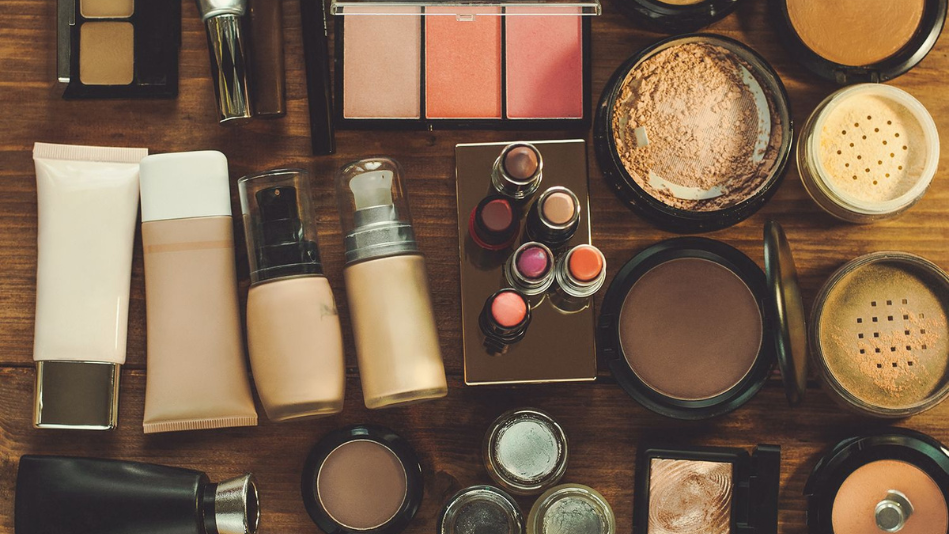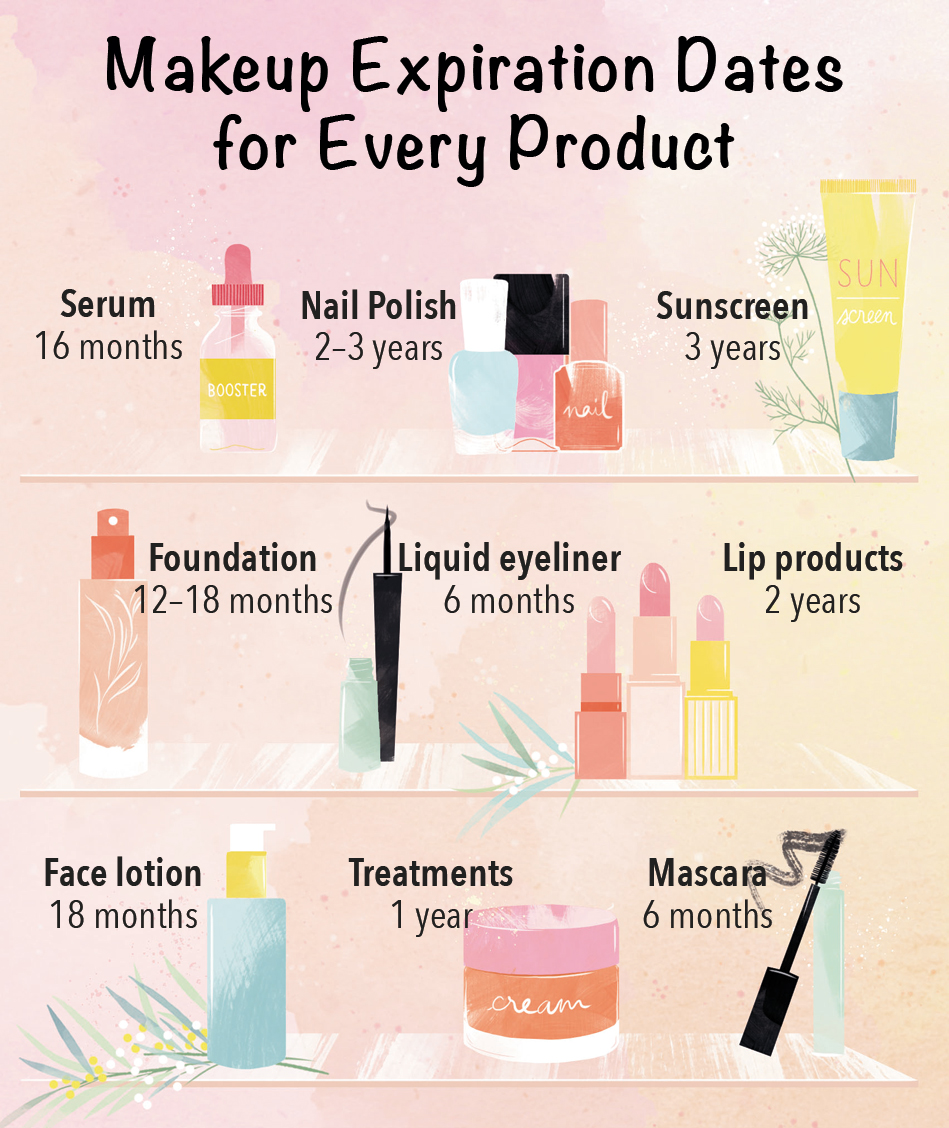The Foolproof Way to Tell When Your Makeup Has Gone Bad
It's time to declutter your beauty products. We've got a handy cheatsheet to help you figure out what can stay, and what's got to go.

Photo: Getty Images
Has the change in seasons inspired you to clean your bathroom cabinets? Bravo! Now's the time for a refresher on expiration dates. Expired products may not only lack potency, but they also can become a breeding ground for bacteria, says Janet Winter Blaschke, CEO of International Cosmetics & Regulatory Specialists. Here's how to tell what's past its prime.
Serum
Treatment ingredients—antioxidants, alpha hydroxy acids—inside an airtight pump or tube are largely protected from bacteria and exposure to air, so they can last about 16 months. But check the package for an expiration date: Serums that contain unstable ingredients, like vitamin C and retinoids, may have a much shorter shelf life, Blaschke says.
Nail Polish
Toss it if you notice a change in consistency (usually after two to three years). That means the solvents in which the pigments are suspended have evaporated, causing color to collect at the bottom. Once separation occurs, getting a smooth, even coat will be difficult.
Sunscreen
If the packaging isn't stamped with an expiration date, the formula should remain stable at room temperature for up to three years. However, exposing a product to extreme heat and sun can cause the contents to break down. In that case, the ingredients will no longer be distributed evenly, so your protection won't be consistent.

Illustration: Babeth Lafon
Foundation
Any makeup formula containing water is at a higher risk for bacterial contamination because water provides a home for bacteria to thrive. Since nearly all foundations except powders have some water, it's best to replace them after 12 to 18 months. Also, as your base ages, the pigments can separate, resulting in uneven coverage.
Face Lotion
If you use one daily moisturizer, odds are you'll finish it long before it expires. But if you have several in rotation—or use only small amounts—throw away anything more than 18 months old.
Eyeliner
Water-based liquid eyeliners can pick up bacteria, which can lead to an eye infection, so toss yours after six months. You can hang on to your pencil liners, though; when you shave off the tip, you remove any bacteria.
Mascara
This is the product you should be most vigilant about: Eyelashes protect the eyes from dirt, pollen, and bacteria. A mascara wand may collect these particles, transferring them into the product, says Blaschke. To reduce the risk of infection, discard mascara every six months.
Treatments
A skincare treatment is exposed to air and bacteria every time you open the jar, eventually causing the active ingredients to degrade and lose their efficacy. After a year, it's probably time to toss.
Lip Products
Lipstick, gloss, and balm typically don't contain water, so they generally collect fewer bacteria. Unless you leave your lipstick in the glove compartment on a summer day, it should be fine for up to two years.
Can't remember how old something is? In general, it's best to toss anything that has significantly changed in color, odor or consistency, says cosmetic chemist Ron Robison.
Serum
Treatment ingredients—antioxidants, alpha hydroxy acids—inside an airtight pump or tube are largely protected from bacteria and exposure to air, so they can last about 16 months. But check the package for an expiration date: Serums that contain unstable ingredients, like vitamin C and retinoids, may have a much shorter shelf life, Blaschke says.
Nail Polish
Toss it if you notice a change in consistency (usually after two to three years). That means the solvents in which the pigments are suspended have evaporated, causing color to collect at the bottom. Once separation occurs, getting a smooth, even coat will be difficult.
Sunscreen
If the packaging isn't stamped with an expiration date, the formula should remain stable at room temperature for up to three years. However, exposing a product to extreme heat and sun can cause the contents to break down. In that case, the ingredients will no longer be distributed evenly, so your protection won't be consistent.

Illustration: Babeth Lafon
Foundation
Any makeup formula containing water is at a higher risk for bacterial contamination because water provides a home for bacteria to thrive. Since nearly all foundations except powders have some water, it's best to replace them after 12 to 18 months. Also, as your base ages, the pigments can separate, resulting in uneven coverage.
Face Lotion
If you use one daily moisturizer, odds are you'll finish it long before it expires. But if you have several in rotation—or use only small amounts—throw away anything more than 18 months old.
Eyeliner
Water-based liquid eyeliners can pick up bacteria, which can lead to an eye infection, so toss yours after six months. You can hang on to your pencil liners, though; when you shave off the tip, you remove any bacteria.
Mascara
This is the product you should be most vigilant about: Eyelashes protect the eyes from dirt, pollen, and bacteria. A mascara wand may collect these particles, transferring them into the product, says Blaschke. To reduce the risk of infection, discard mascara every six months.
Treatments
A skincare treatment is exposed to air and bacteria every time you open the jar, eventually causing the active ingredients to degrade and lose their efficacy. After a year, it's probably time to toss.
Lip Products
Lipstick, gloss, and balm typically don't contain water, so they generally collect fewer bacteria. Unless you leave your lipstick in the glove compartment on a summer day, it should be fine for up to two years.
Can't remember how old something is? In general, it's best to toss anything that has significantly changed in color, odor or consistency, says cosmetic chemist Ron Robison.



